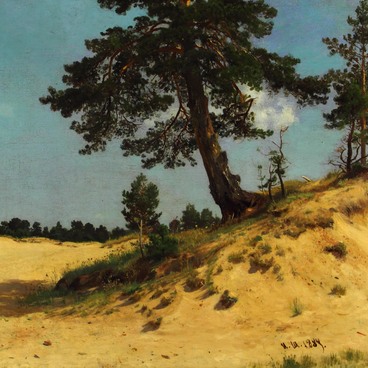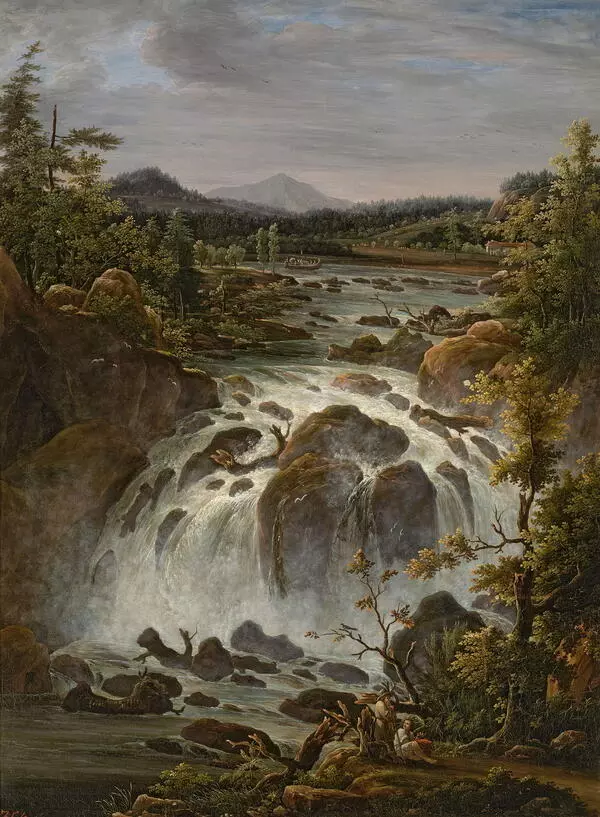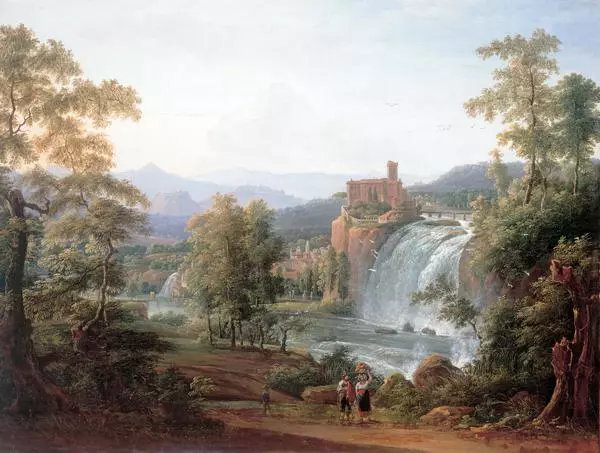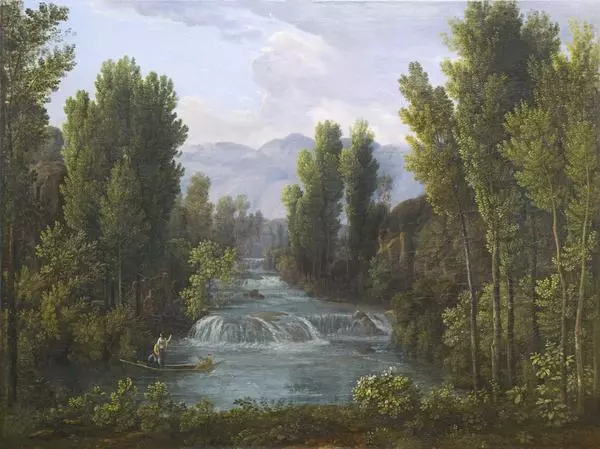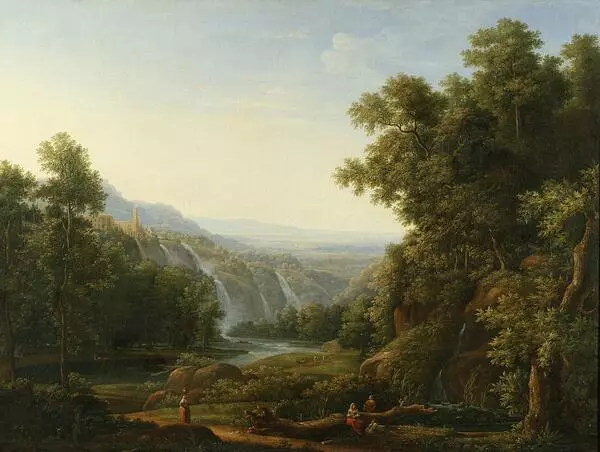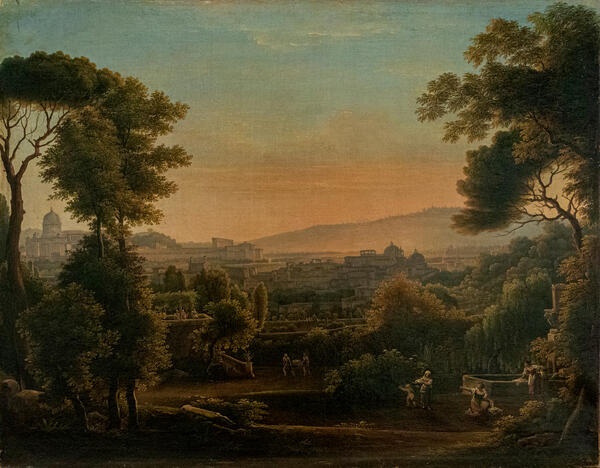Russian landscape painter Fyodor Matveyev was born in 1758 in the family of a soldier of Izmailovsky Life-Guard Regiment. At the age of six, he was sent to the School of the Academy of Art, and then he continued his education under Semyon Shchedrin, a prominent Russian landscape painter of the 18th century. In 1779, Matveyev graduated with honors from the Academy and was awarded a Larger Gold Medal. The award ensured him a government-sponsored trip to Italy, from which he never returned.
In 1807, Matveyev was granted an honorary title of the Academician of Pictorial Art for his canvas A View of Naples from the bottom of Posillipo. His art got recognition not only in Russia: in 1813, the painter was elected a member of the St. Luke Academy in Rome. Famous Russian landscape painter Silvester Shchedrin, who visited Matveyev’s studio in Rome, admired his painting and noted easiness of his brushstrokes and extraordinarily attentive reproduction of nature.
Back then, academic landscapes were often called views. They were painted in such a way that the image looked like a stage performance: with obligatory wing flats on the sides in the form of vegetation or buildings, and with division into the foreground, middle ground and background. Following this rule, Matveyev painted his View in Italy, that was completed in 1805.
Strict canons of Classicism implemented in this landscape do not look academically stiff: they are offset with asymmetrical composition implemented with the help of seamless transition between the plans interconnected with wandering water streams and mountain paths. The composition is counterbalanced with trees that also play the role of wing flats. Travelers are wandering along narrow paths: they are heading for a villa that is painted in the center of the second plan.
In 2008, art experts identified that the painting shows the well-known Villa d’Este: one of the most exquisite Italian villas of the 16th century located in the town of Tivoli not far from Rome. Judging by the wafers at the back of the canvas stretcher, in early 19th century the landscape belonged to Count Yuri Golovkin, the Russian Ambassador in Austria and an Active Privy Councillor.
In 1807, Matveyev was granted an honorary title of the Academician of Pictorial Art for his canvas A View of Naples from the bottom of Posillipo. His art got recognition not only in Russia: in 1813, the painter was elected a member of the St. Luke Academy in Rome. Famous Russian landscape painter Silvester Shchedrin, who visited Matveyev’s studio in Rome, admired his painting and noted easiness of his brushstrokes and extraordinarily attentive reproduction of nature.
Back then, academic landscapes were often called views. They were painted in such a way that the image looked like a stage performance: with obligatory wing flats on the sides in the form of vegetation or buildings, and with division into the foreground, middle ground and background. Following this rule, Matveyev painted his View in Italy, that was completed in 1805.
Strict canons of Classicism implemented in this landscape do not look academically stiff: they are offset with asymmetrical composition implemented with the help of seamless transition between the plans interconnected with wandering water streams and mountain paths. The composition is counterbalanced with trees that also play the role of wing flats. Travelers are wandering along narrow paths: they are heading for a villa that is painted in the center of the second plan.
In 2008, art experts identified that the painting shows the well-known Villa d’Este: one of the most exquisite Italian villas of the 16th century located in the town of Tivoli not far from Rome. Judging by the wafers at the back of the canvas stretcher, in early 19th century the landscape belonged to Count Yuri Golovkin, the Russian Ambassador in Austria and an Active Privy Councillor.
